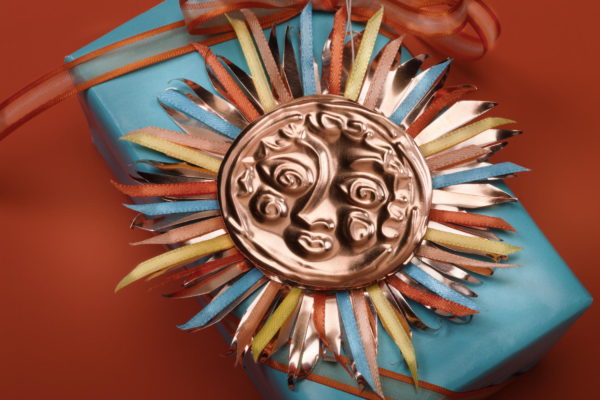
Hundreds of handmade ornaments adorn the majestic 16-foot Christmas tree near the central stairway of the DeWitt Wallace Decorative Arts Museum. The folk art tree is a Williamsburg tradition dating back decades. And if you’d like to make your own, we can help.
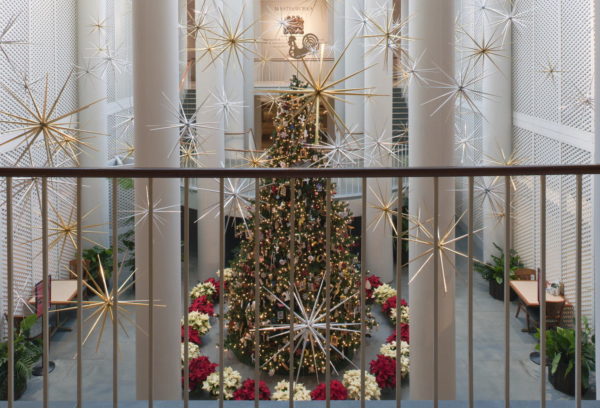
In the folk art museum’s previous location, the Christmas tree was a comparatively small eight-footer. “When we moved over to the bigger museum we had the opportunity to add more ornaments,” explains Jan Gilliam, Manager of Exhibit Planning for Colonial Williamsburg’s art museums.
But what to add? She and Christina Westenberger, Assistant Manager for Museum Education, didn’t have to go too far for inspiration.
They looked to the Abby Aldrich Rockefeller folk art collection.
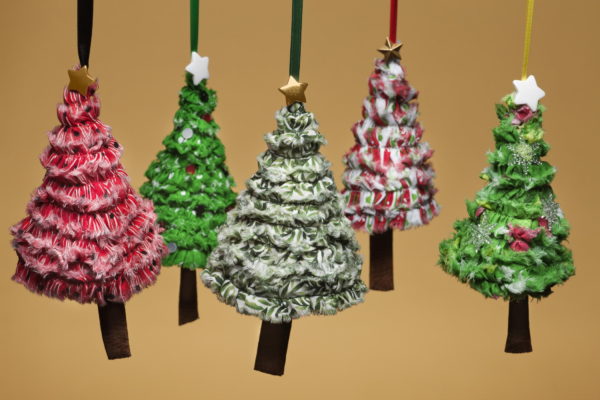
“Before the ornaments were all handmade but they didn’t relate to the collection. We already had some favorite pieces so we started with those,” says Jan.
Jan and Christina collaborated in developing “The Art-Full Tree,” a book featuring more than 30 Christmas ornaments that anyone can make — and all are inspired by the folk art collection.
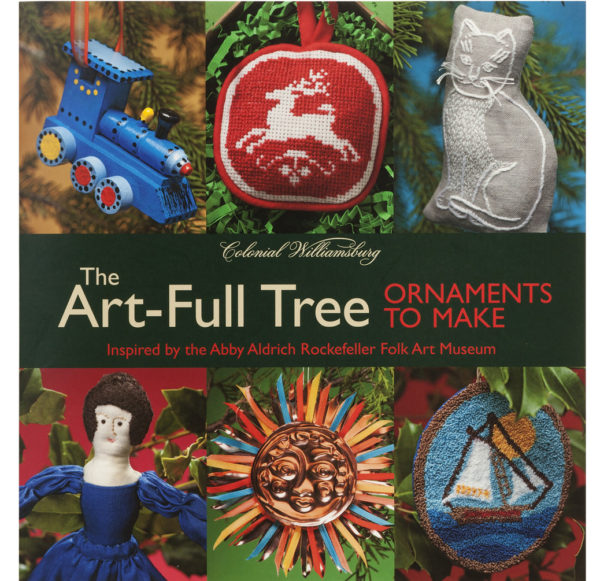
Each project in “The Art-Full Tree” includes full-color photographs and detailed instructions. They also tell the stories behind the art: a sculpture of a favorite pet, a sampler that illustrates a family tree, even a weather vane ridden with bullet holes.
“Part of the reason for doing the book was that we don’t have a catalog of the collection,” says Jan. “So when people come, we wanted to pick a good representation of the folk art collection so people could take home great pictures of some of our great objects.”
But the authors aren’t just making copies. They are modeling a way for anyone to satisfy their own creative impulses.
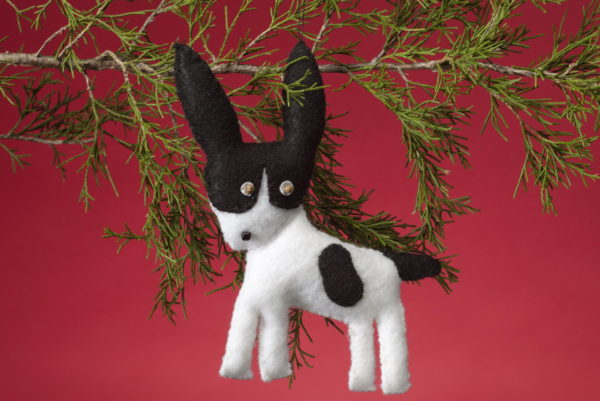
“We didn’t want to just re-create things,” says Christina. “We didn’t want to take a painting and make a miniature painting. We didn’t want to take a sampler and make a miniature sampler. We didn’t want to take a fraktur and make a miniature fraktur. We wanted to pull those elements and try to make them out of a completely different material if we could.”
“And to give people the sense that they can be creative, too,” adds Jan. “We used our collection, but if you have a favorite piece in your hometown museum there’s no reason you can’t take these same ideas and do it yourself.”
“We tried to make it so that there are some that are fairly easy, so even people who aren’t overly crafty can manage, and then there are some that are more technically challenging,” says Jan. “Hopefully people will be inspired by this, but not feel required to follow every direction exactly.”

“We also tried to give variations, like the little Eddie Arning birds that are made out of felt,” added Christina. “You can make yours out of paper.”
“You could make all of the ornaments in a red-and-white scheme,” says. “You could do everything in a 1950s color scheme.” A whole flock of birds. Just quilts.
Christina bubbles over with ideas, and she continues to develop new projects inspired by current exhibits. The museum regularly offers hands-on activities that give guests the opportunity to create their own art inspired by the collection.
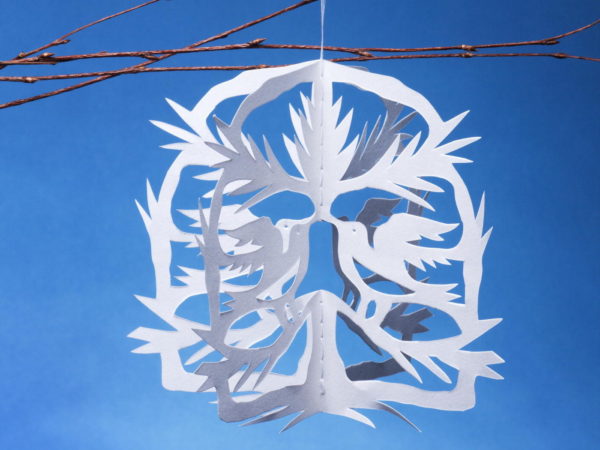
“We can use the collection in so many different ways, and this is one way where we can actually be hands on,” says Jan. “You can write labels, and you can write a research paper, and you can do an exhibit, and those are all different ways to look at the collection. But to me this is really fun because I like doing stuff with my hands, and I don’t get to do that all the time. This is a way we can share it.”
“I feel that way about all our activities,” adds Christina. “Here’s this object and this is why we think it’s important.”
But creating one of the ornaments is more than a cute craft. “It makes you look at the artwork more carefully,” says Jan. “It really makes you focus on the art and what that original artist was doing.”
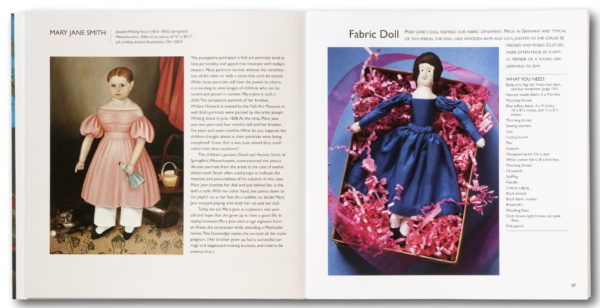
“The doll that Christina made was based on a painting we have in the collection of a little girl with her doll. That’s only one small part of the painting. But when you start looking at it and think about who the little girl is and why she has a doll and what the doll was made of, you really start to look more deeply at the art, too. In that instance it was a lot of fun just to spend some more time with individual pieces.”
Folk art is almost by definition accessible. It invites citizens to have an opinion, to engage, to relate on an intimate level.
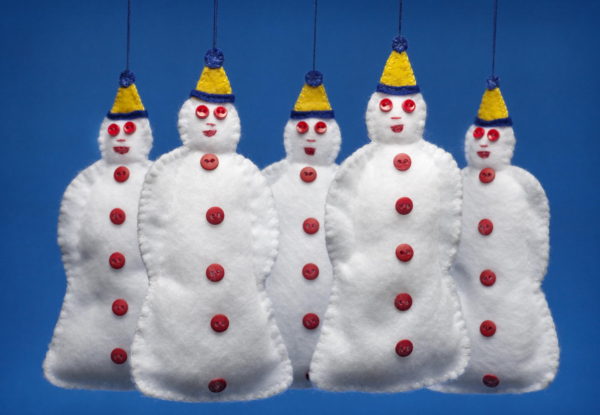
“Folk art,” says Christina, “is something everybody can associate with, whether it’s a fraktur commemorating a birth and a baptism, or a quilt to keep you warm, or a weather vane made to tell you the direction of the wind or a painting to remember an event in your life.”
Adds Jan: “You can talk a lot about the inspiration of the original artist and why it is he’s created this piece and the fact that he may not have been trained to do any of this. They’ve taught themselves to do this.”
The inclusion of the experiences of everyday people has been a work in progress throughout Colonial Williamsburg’s history, but it dates to its earliest years.
“The first exhibit, which was done anonymously but was mostly Abby Aldrich’s collection, was called ‘the art of the common man,’” says Jan. “And that is sort of where this whole idea came from, that these are things that the common man, anybody off the street, was capable of engaging with. Some more successfully than others, but that’s not the point. The point is that they felt they could participate.”
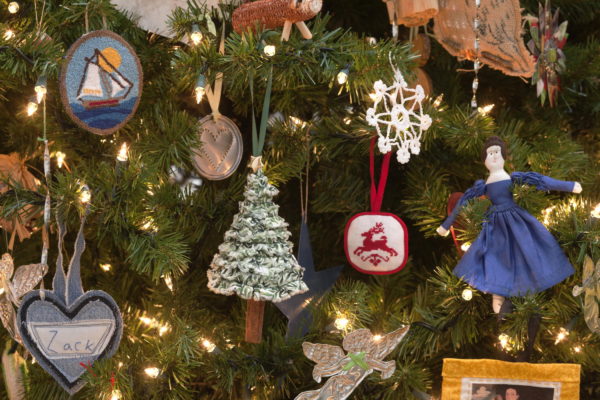
Learn how to create your own folk art-inspired ornament to take home folk art ornament! Drop by the Art Museums on Friday, Dec. 16, 23, or 30 anytime from 2:45-4:15 p.m.

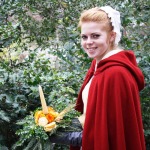
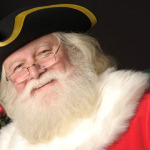
The Christmas tree at Bruton Heights School—where the Institute for Teacher Professional Development, Productions, Photo Services, Architecture, Research, Interpretive Program Development, and more are located—is decorated with ornaments we made from the Artfull Tree book. Making the ornaments together and then decorating the tree with them each year has been a wonderful Christmas tradition! The Bruton Heights School behind-the-scenes tour runs Mon/Wed/Fri at 2:30 and is open to hotel guests and annual pass holders.